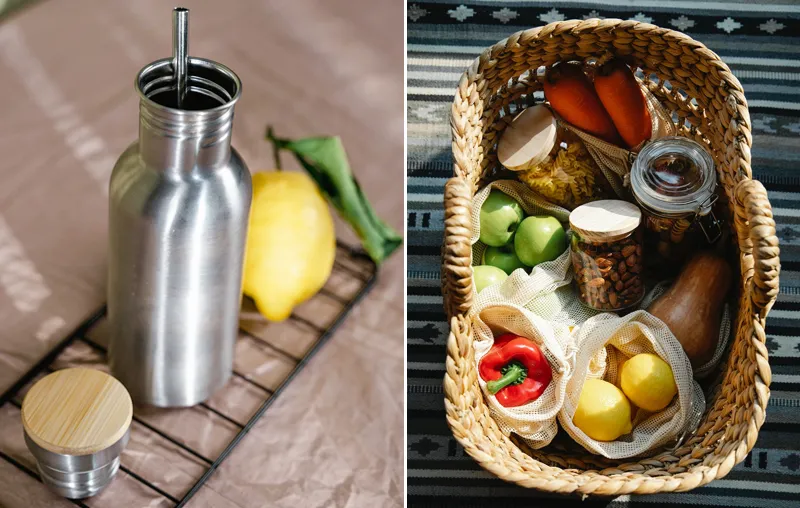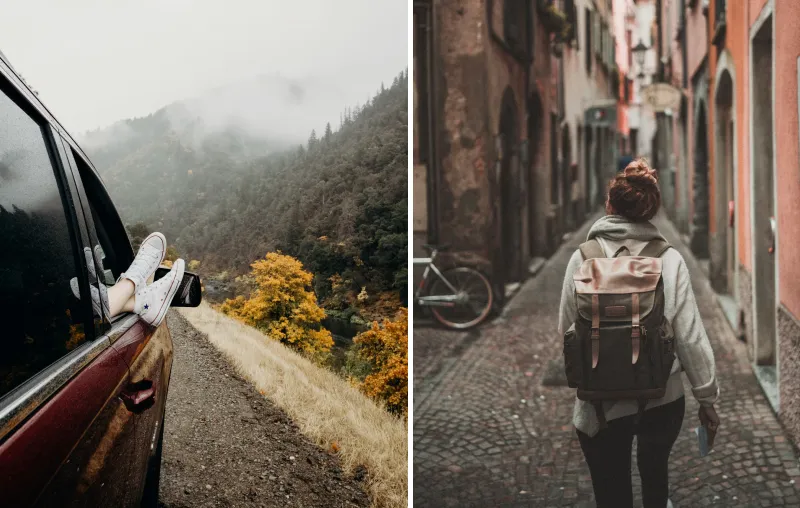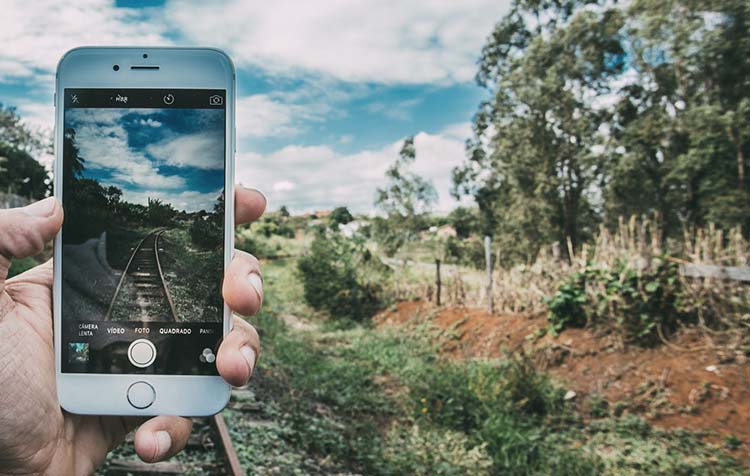What can sustainable sun protection look like? If you want to protect yourself from the sun and provide shade at home, you've come to the right place!
Without the warmth and light of the sun, life on earth would not be possible. It would be dark, freezing cold and the air we breathe would become increasingly scarce. Plants need the sun to carry out photosynthesis - and it promotes health, vitality and mental well-being in humans and animals.
But its UV radiation is dangerous because it massively increases the risk of health problems. In addition, solar radiation, driven by the Climate Changeincreasingly intense.1 Fortunately, there are ways and means of protecting yourself from the sun in everyday life - including in an environmentally friendly way.
In this article, I present the best tips for sustainable sun protection in your home. You'll find out how to avoid the dangers and Preventing the risks of UV rays and how you can provide sufficient shade. Let's go!
Here you can find a short overview in advance:
- Protect skin specifically from the sun
- Provide shade with trees, hedges and shrubs
- Install pleated blinds and roller blinds on the window
- Get sunshades from recycled materials
- Install environmentally friendly awnings
- Let pergola or arbor overgrown with climbing plants
- Install awnings from ecological fabrics
- Install shade curtains
- Install blinds and shutters
- Reuse old materials for shade
- Build gazebo or garden house with lounge
Advantages: Why sustainable solar shading in the first place?
Before we get right into the tips, I'd like to start by briefly explaining why you should balance sun protection and sustainability. The following two main reasons speak in favor of protecting yourself from the sun as ecologically as possible.
Protect the environment and conserve resources
Sustainable protection from the sun protects the environment (especially coral reefs), for example from chemical ingredients in sunscreens, reduces CO2 emissions for new consumer goods through targeted resource conservation, minimizes damage to buildings and helps, for example, in terms of "Lawn watering" also present, Save water.
Protect health
Whether sustainable or not, sun protection is particularly important because UV radiation can cause, among other things skin aging, sunburns, skin cancer, circulatory problems, cataracts and Eye damage can lead to a reduction in energy consumption. However, the specially sustainable sun protection additionally protects the environment.
11 tips: How can I sustainably protect myself from the sun at home?
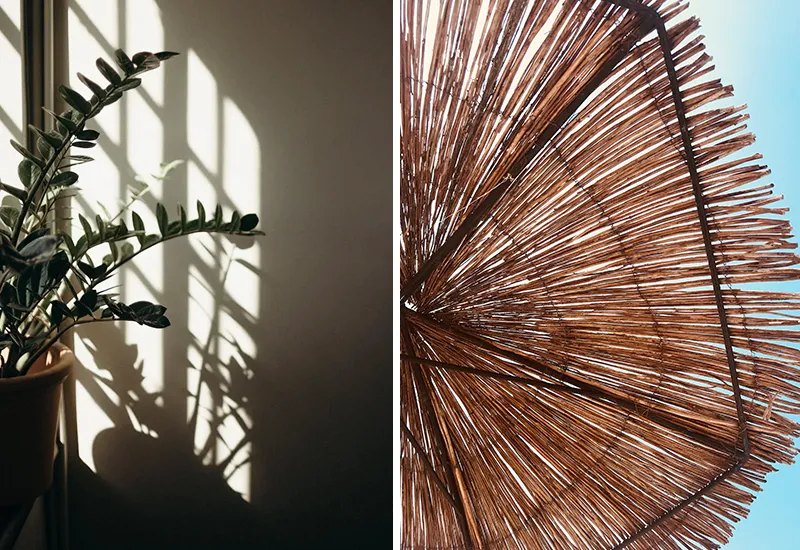
Enough theory! Now I would like to show you how you can actively protect against the star's rays in an environmentally friendly way that is closest to the earth. I have put together the most valuable tips for you.
In the end, it is a sensible Combination of classic sun protection tips and ways to provide shade.
Use the following advice to expose yourself to the sun less often, get yourself protect from UV rays and equip your home with sustainable shade solutions.
1. protect skin specifically from the sun
Let's start with the most obvious sun protection! By applying organic, vegetable, mineral. Sunscreen with a high sun protection factor, you protect both your skin and the environment. UV filters and chemical ingredients of conventional creams are, for example, partly responsible for the Coral mortality.
Also wear headgear, sunglasses and clothingIt protects you from UV rays when you're out in the sun and prevents wrinkles. To make your purchases sustainable, you should consciously choose durable fashion and products that are made fairly and from environmentally friendly materials.
It's also advisable to keep your Move outdoor activities to the morning or evening hours, to avoid the strongest sunlight at midday. This is a generally very valuable Tip against the heat in summer.
Tip: What you can do in general against coral dieback I'll explain how you can do this in the linked blog article.
2. provide shade with trees, hedges and shrubs.
Now it's about providing shade in your home to protect both you and buildings from the sun! By planting trees, hedges and shrubs you create a very natural shadow, supports the local flora and fauna and promotes the bustle in the sustainable garden.
The plants contribute to Air purification and act as CO2 storage. However, make sure to use local and preferably heat-resistant trees and shrubs in order to do even more for biodiversity and to benefit from plant shade providers in the long term.
Here are some native trees and shrubs that are as dense as possible and work as sustainable sun protection with plants:
Trees:
- Wild Cherry
- Sessile Oak
- Apple Thorn
- Field Maple
- Real serviceberry
- Sweet chestnut
Shrubs:
- Barberry
- Wine-Rose
- Sea buckthorn
- Common Hawthorn
- Dog Rose
Tip: Climbing plants such as Vines and ivy cope well with climate change, can provide shade and can Protect against heat in summer. More on this in a moment.
3. attach pleated blinds, roller blinds or protective film to the window
Pleated blinds, roller blinds and roller blinds function as internal sun protection for windows. High-quality sun protection films naturally wonderful. Pleated fabric is folded and often consists of Organic cotton or - just like many films - from recycled materials.
All three sun shading types reduce heat transfer, protect you from UV rays and help to Energy consumption for cooling your own four walls. Pleated blinds and roller blinds can also be conveniently adjusted to suit your needs.
When buying, however, make sure that the materials are UV-resistant, easy to clean and recyclable. For environmentally friendly materials, you can use the Ökotex Standard 100 certificate orient
4. get sunshades from recycled materials.
To get your ecological footprint you should also choose sustainable products for the parasol on your balcony or terrace. For example, there are umbrellas from recycled PET material and natural fibers such as bamboo or jute, which are without plastic waste be sent.
When buying umbrella be sure to check that the fabrics and metal durable, water repellent and UV resistant are to protect you permanently and just environmentally friendly from the sun. Manufacturer:inside should also be a member of the Business Social Compliance Initiative (BSCI) that promotes fairness in the global supply chain.
5. install environmentally friendly awnings
Awnings are directly connected to a building and are heat, glare, object and sun protection at the same time. For example, there are sustainable solar protection fabric from recycled PET bottles, the "cradle-to-cradle"-certified and can be used for awnings, but also for roller blinds.
When choosing an awning, be sure to make sure that it is made of durable, recyclable and weatherproof material so that it will serve you as an ideal sunshade for the terrace for a long time to come.
6. leave pergola or arbor overgrown with climbing plants.
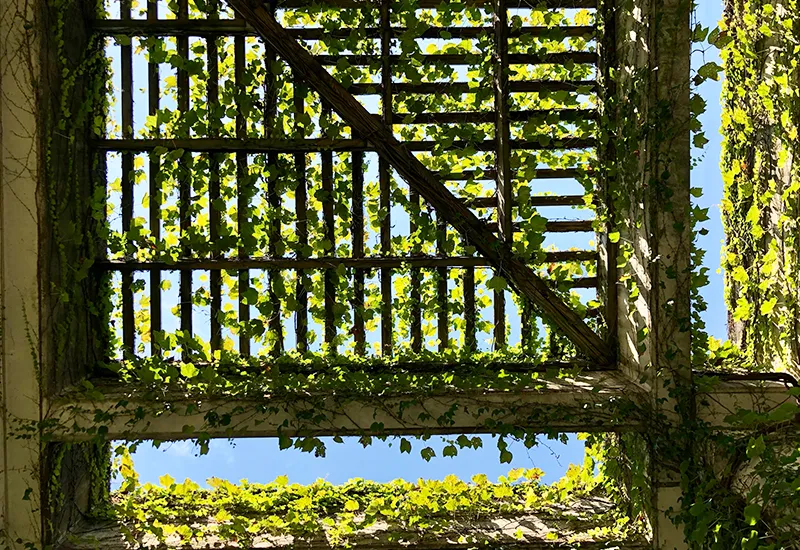
For shady patio roofs, there is a pergola or arbor made of domestic woods from sustainable forestry and dense climbing plants such as ivy, vines or clematisan almost ideal, environmentally friendly shade solution.
The plants provide protection from the sun's rays, cool the air and promote biodiversity. You can use them also on fences, trellises or walls entwine to gain more shaded areas in your garden.
By the way: From the Ivy leaves you can make yourself a natural dishwashing liquid. You can find out how this works in the linked blog post.
7. install awnings made of ecological materials.
Also by installing a solar sail made of ecological materials such as. recycled polyester or Oeko-Tex Standard 100 certified organic cottonyou can make a real difference.
The materials are Durable, UV-resistant and environmentally friendly - and protect against sunburn and other health hazards. In addition, fairly produced, ecological awnings also serve as a sustainable garden privacy screen, on the balcony or on the terrace.
8. install shade curtains
On the pergola or terrace roofing can be completely simple garden or outdoor curtains install made of durable plastics (e.g. polyester) or ecological natural materials (e.g. organic linen or organic cotton), which create a pleasant atmosphere when needed, elegantly blow in the wind and function as a green sunshade.
9. install blinds and shutters
Exterior blinds and shutters provide shade, reduce solar radiation and help maintain room temperature. As a result, when the outside temperature is hot, they are also able to Reduce energy consumption for air conditioning.
To use this sun protection tip sustainably, you should pay attention to the following when buying Quality and weather resistance pay attention.
Tip: Also sliding and folding shutters made of wood, which are mounted on the outside of the facade, provides a sustainable option for sun protection.
10. reuse old materials
Through Upcycling you can use natural Conserve resourcesreduce waste and create truly unique shade solutions for your outdoor area. With just a little creativity, existing items can be converted into sustainable sun protection.
For example, you can make curtains from old Textiles create, old Brick make into small walls or Wooden pallets and dismantled Fences Convert to a terrace privacy screen.
11. build gazebo or garden house with lounge
With a gazebo or a garden house with lounge made of sustainable materials, FSC certified wood from ecological forestryyou have another option for more shade.
This will create a cozy outdoor retreat - and also a Garden house you can leave additional vegetation. With the right orientation in the garden, you can even ensure that you a shady spot at any time of day you will find.
Sustainable sun protection at home, made easy!
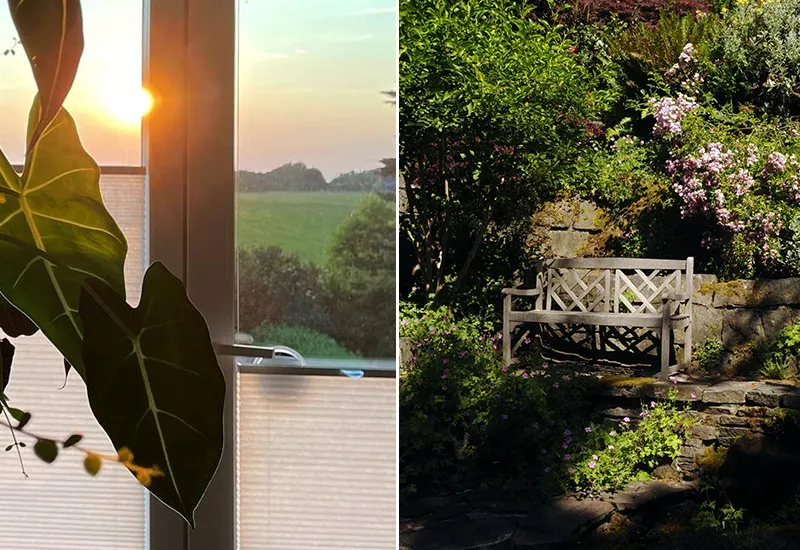
Now you have got to know many ecological sun protection alternativesyou can live out your sunny disposition in the shade and avoid dangerous sunburns at the same time. Whether with dense, sun-resistant trees and shrubs in the garden, overgrown patio scaffolding and upcycling ideas, or even awnings and pleated blinds.
In conclusion, it can be said that a Responsible and sustainable handling with the respective sun protection is of great importance for health, the environment and the natural resources of our planet. What's more, learning is probably the best form of sun protection in the long term, live climate friendly. 🙂
"The one who plants trees, knowing that he will never sit in their shade, has at least started to understand the meaning of life."
Rabindranath Tagore (more at Trees Quotes)
I very much hope that I have been able to help you with this blog article. Do you have any questions, suggestions or further tips? Then I look forward to your comment.
Stay sustainable and protected from the sun,

PS: In another blog post, you'll next learn the best Ideas for a sustainable summer know. If you like you can now also talk about sustainable ice cream inform. Either way, I hope you continue to enjoy reading!
References:
- Wissen.de: Have the sun's rays become more dangerous over the years?, available at https://www.wissen.de/sind-die-sonnenstrahlen-im-laufe-der-jahre-gefaehrlicher-geworden. [29.01.2025]. ↩︎



